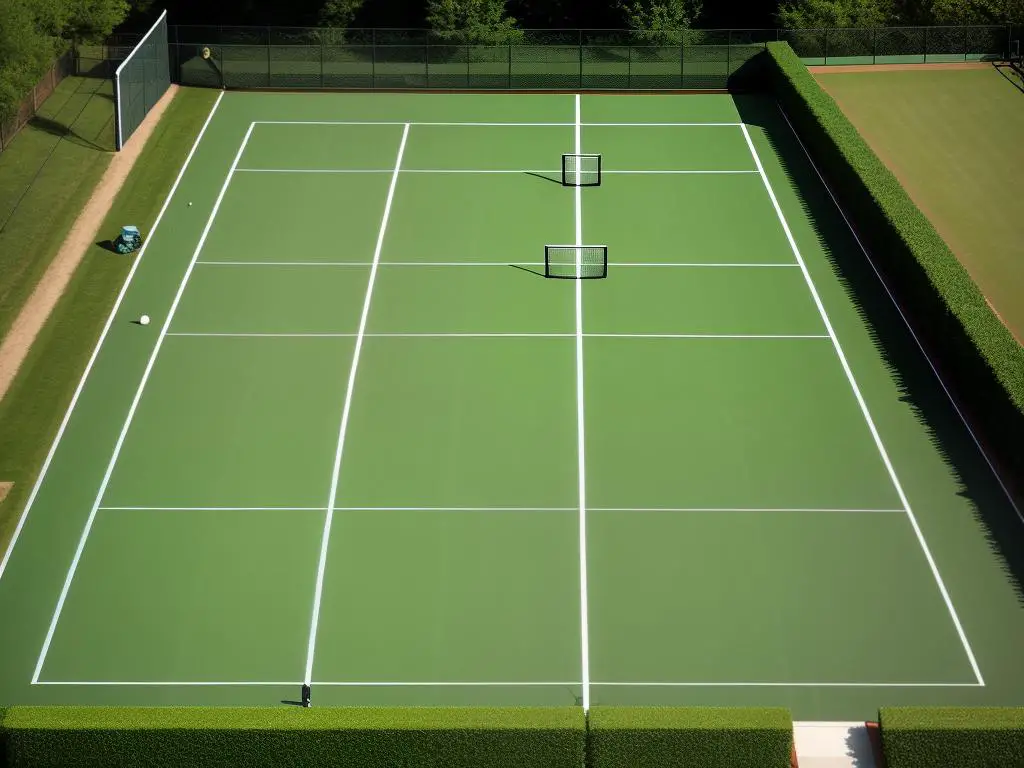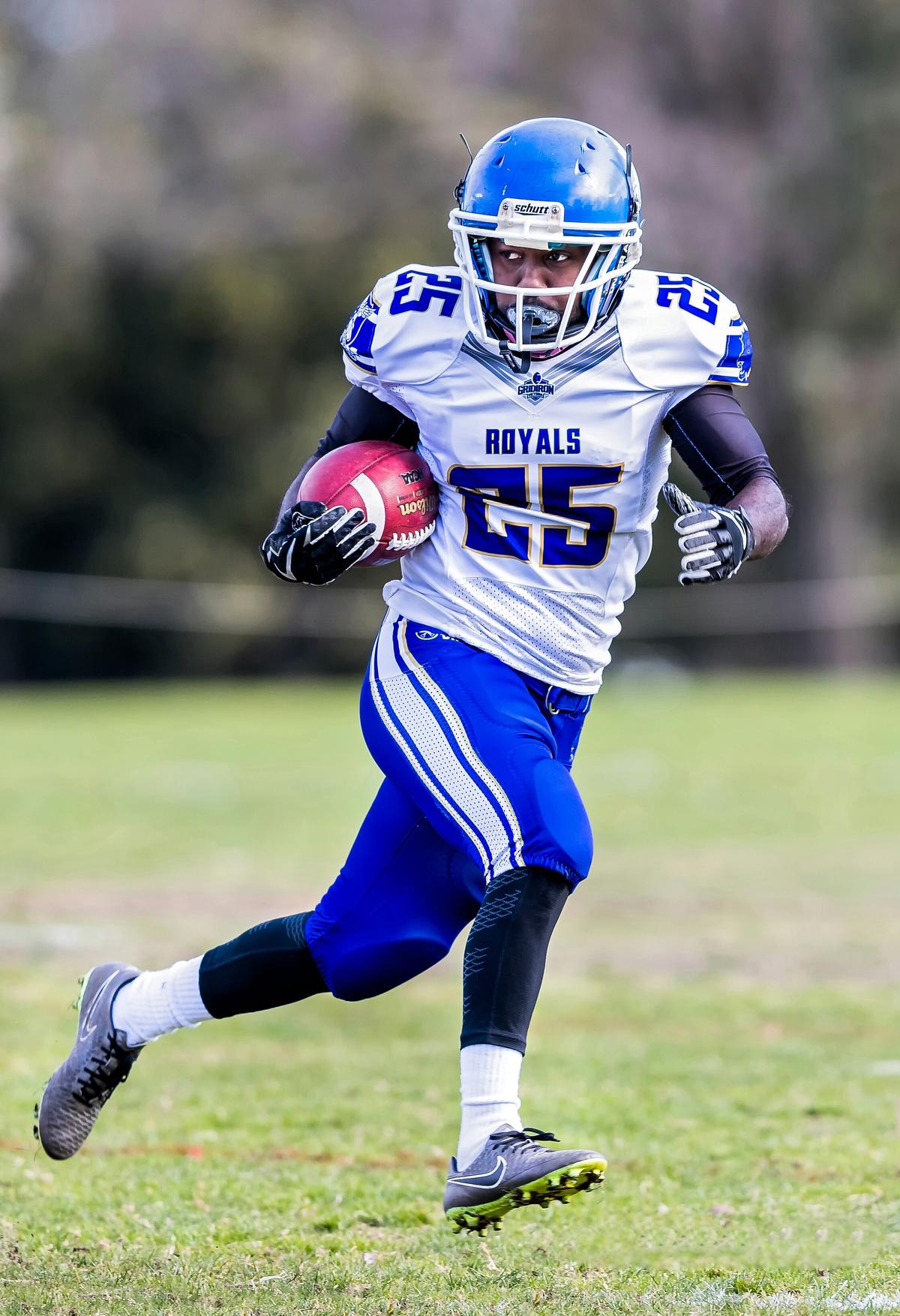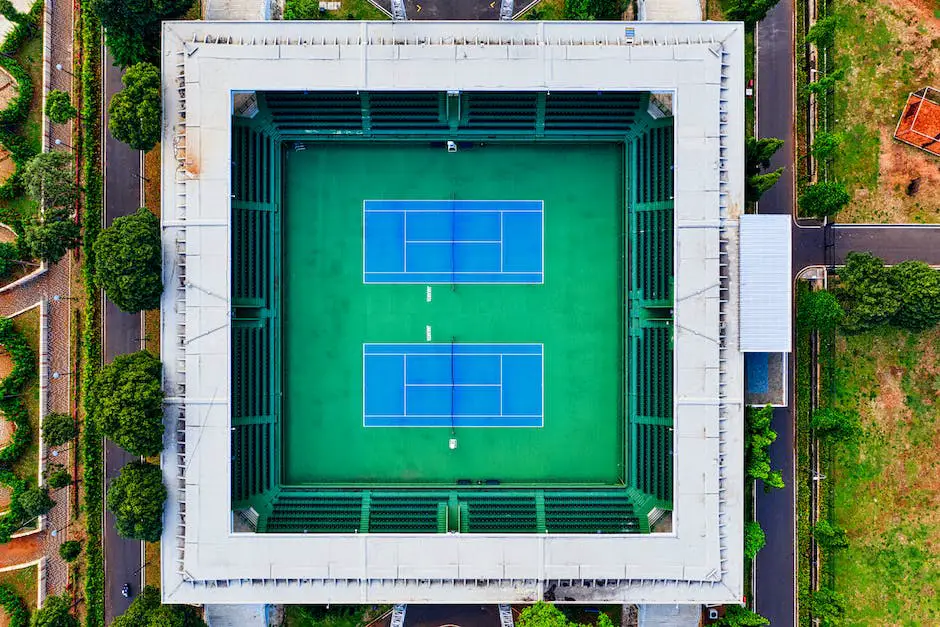Mastering the game of tennis is about much more than just perfecting your serve or backhand swing. It’s a strategic exercise that requires a deep understanding of the layout and positioning within the court. This includes comprehending the fundamental purpose of different areas like the ‘baseline’, ‘service line’, ‘alley’, and more, which when understood, can significantly influence the outcome of your gameplay. Let’s explore the basics of positioning, whether it’s the ready position in singles or the service position in doubles, and delve into how these positions can fluctuates based on circumstance and the opponent’s shot. We’ll investigate this and more to provide a comprehensive insight into the art of effective tennis court positioning.
Understanding the Tennis Court
Understanding the Tennis Court: Key Elements
Each court in the game of tennis has specific components that help define the rules and style of play. Crucial ones include the ‘baseline’, ‘service line’, and ‘alley’ among others.
The ‘baseline’ refers to the lines at the far ends of the tennis court. It marks the outermost boundary of the court, running parallel to the net. The baseline is crucial for serving and for determining whether a ball is in or out of play. In doubles competitions, the area between the singles and doubles sidelines (or alleys) is considered in play.
The ‘service line’, on the other hand, is the line that’s parallel to the net and midway between it and the baseline. It forms the boundary of the service boxes. Each half of the court is divided into two service boxes (right and left) by the center service line. The server must land their ball into the diagonally opposite service box from their position.
Widen Your Comprehension: The Alley, Net, and More
The ‘alley’ is referred to as the narrow strip on each side of the court that is in bounds for doubles tennis but is considered out of bounds in a singles match. This region is also known as the ‘tramlines’ in some places because of its long, thin appearance.
The ‘net’ divides the court into two halves. It’s stretched across the width of the court, precisely dividing it into two equal halves. It’s the primary obstruction players must clear when hitting the ball to their opponent.
‘Singles sidelines’ delineate the width of the court for a singles match, while ‘doubles sidelines’ are used for a doubles match and include the width of the alleys.
To become efficient in tennis, understanding the court components is fundamental. Doing so will enable you to better strategize and position yourself effectively during the game. Whether you are serving, returning, or rallying, knowledge of these components is sure to enhance your overall gameplay.

Positioning Basics
The Basics of Tennis Court Positioning
Understanding the positions you need to assume for different plays in tennis is crucial for winning the game. In both singles and doubles games, there are three main positions: the ready position, the service position, and the recovery position.
Ready Position
The ready position is where you start and is your default position. Place your feet shoulder-width apart, bend your knees slightly and shift your weight forward onto the balls of your feet. Keep your racket in front of you with your hands gripped as if you are shaking hands with it. You should be prepared to move to the ball and strike it. The ready position varies slightly depending upon where your opponent may serve the ball or what kind of shot they might play.
Service Position
In serving, stand behind the baseline, with one foot in front of the other, about shoulder-width apart. The foot closer to the net (the left foot for a right-handed player and the right foot for a left-handed player) should be turned diagonally towards the net. Toss the ball above your head, shift your weight from your back foot to your front foot, and strike the ball. The service position can change based on your preferred serve or the type of serve you believe will effectively challenge your opponent.
Recovery Position
After hitting a shot, the recovery position is where you move back to quickly after playing your stroke. In singles, it’s approximated as the center of where your next shot could possibly be. In doubles, the recovery position depends on both where the ball is and where your partner is. Always remember that after playing your shot, you need to move quickly into your recovery position.
The specific position and style of play can change based on the situation at hand and opponent’s shot. For example, if your opponent tends to hit deep, powerful shots, your recovery position may be further back. The knowledge of these basic positioning rules will help players make better decisions, be more prepared and ensure better performance on the court.

Photo by johntorcasio on Unsplash
Strategic Positioning
Understanding the Importance of Positioning in Tennis
In tennis, strategic positioning is crucial. This refers to the idea of placing yourself in an optimal position on the court to best respond to your opponent’s shots while also setting up for your next move. This involves both decisive footwork and an understanding of game tactics. With intelligent positioning, you can effectively aim your shots, better anticipate your opponent’s actions, and conserve energy – all factors that could translate into a match win.
Basic Tennis Court Positioning
Generally, there are three main positions in tennis: the baseline, middle of the court or “no man’s land”, and the net position.
- Baseline Position – This is where most players start and return serves. From here, you can hit deep ground strokes and have more time to react to your opponent’s shots.
- Middle Court Position – Also known as “no man’s land”, this isn’t generally a favorable position as it leaves both the baseline and the net area exposed.
- Net Position – This is an aggressive position, perfect for volleying or smashing to quickly finish off points. However, be aware that this does leave the baseline open for lobs.
Advanced Strategic Positioning
Mastering the above positioning tactics is just a start. As you become more experienced, you should start implementing more advanced strategies:
- Offensive Positioning – Move inside the baseline to hit shots on the rise, taking time away from your opponent and maintaining control of the game.
- Defensive Positioning – When under pressure, position yourself deeper behind the baseline to buy yourself more time to react and return balls.
- Counter Positioning – Adjust your position depending on your opponent’s position. For example, if your opponent is at the net, take a step back to get ready for volleys or to lob the ball.
Influence Your Opponent with Clever Positioning
Your own positioning can influence and manipulate your opponent’s actions. For instance, if they notice you advancing towards the net, they are more likely to attempt a passing shot or a lob, which could be risky and might provoke mistakes. A balanced approach, alternating between offensive and defensive play, will keep your opponent guessing and disrupt their rhythm.
Learning from the Pros
To truly maximize your positioning skills, study historic tennis matches and pay attention how professional players position themselves during different points of the game. Observe how they constantly readjust, move their opponents around and use space to their advantage. Key players to learn from include Roger Federer for his aggressive baseline play, Rafael Nadal for his defensive tactics, and Martina Navratilova for her net domination.
Through conscious strategic positioning, you can control the flow of the game, efficiently use your energy and ultimately increase your chances of winning your tennis matches.

As our exploration into the use of positioning on the tennis court shows, it’s a crucial aspect regardless of whether you play singles or doubles games. Shifting and adjusting your position can drastically impact the dynamics of play, influencing your opponent’s tactics and potentially altering the course of the match. By examining famous games, we underline how strategic positioning can be the difference between a good player and a great one. So, remember, tennis is more than just hitting the ball. It’s a strategic dance that places equal importance on your reactions, preparations, and placements on the court. By taking these insights on board, you’ll find yourself becoming a stronger, more adaptable player, no matter who or where you are playing.